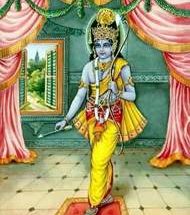Guru Tegh Bahadur ji & Establishment of Gurudwara Sheeshganj and Rakabganj
Guru Tegh Bahadur Story
Ninth Patshah Sri Guru Tegh Bahadur ji sacrificed his life but did not give up the truth. He gave his life to protect Sanatan Dharma. Such sacrifices are a true inspiration for the entire humanity.
Mughal ruler Aurangzeb captured the throne of Delhi , imprisoning his father and killing his own brothers. He spent his first 10 years of rule in dealing with his brothers and father Shah Jahan. Aurangzeb’s atrocities on nonmuslims rose to their peak after this period. He was busy killing Hindus and destroying their temples.
In the year 1675 AD, a group of Kashmiri Pandits, led by Pandit Kripa Ram, came to the court of Guru Tegh Bahadur Ji in Kiratpur Sahib,Punjab. He pleaded – O true Patshah(Emperor), the Subedar of Kashmir is trying to convert us to please his King Aurangzeb. We request us to protect us from his atrocities.
Guru Tegh Bahadur ji greatly concerned after hearing about their plight. Meanwhile, his nine-year-old son Shri Guru Gobind Singh ji came from outside. Seeing his father worried, he asked the reason. Guru Tegh Bahadur narrated the plight of Kashmiri Hindus to him. He also said that only a great man’s sacrifice can save them now.
Child Govind Rai ji naturally said that who could be greater than you at this time. This reply made Guru Tegh Bahadur proud of his son. The ninth Patshah Guru Tegh Bahadur ji sent the Kashmiri Hindus back saying that if someone comes to get you converted, then tell them that first get Guru Tegh Bahadur converted, only then we will change religion.
Shri Guru Tegh Bahadur agreed to take the fight head on with Aurangzeb. He handed over the Patshahi throne to Govind Rai and left for Delhi to meet Aurangzeb.
Aurangzeb arrested Guru Tegh Bahadur and imprisoned him. Three conditions were placed in front of Guru ji –
- Either he should change religion or
- Show some magic or
- Be ready for martyrdom.
Guru Guru Tegh Bahadur ji refused to accept the first two conditions.
As a result, the three disciples who had accompanied Guru ji – Bhai Mati Das, Bhai Sati Das and Bhai Dayala – were tortured and martyred. Guru ji was already prepared for all this. He said – I am against conversion and showing miracle is not justified if it is for the fear of life.
Guru ji was kept in the lock-up of Chandni Chowk for eight days. He was tortured, but he remained unmoved. Finally, on the orders of frustrated mughal king Aurangzeb, he was beheaded on 11 November 1675 at Chandni Chowk square in front of lock-up prison. The place where this heinous sin took place, is today has ‘Gudwara Sheesh Ganj Sahib’ in the memory of Guru Guru Tegh Bahadur ji.
Guruji’s torso was later stolen by Hindu Lakhi Banjara. He risked his life, brought Guru Tegh Bahadur ji’s torso, he set it on fire along with his whole house to avoid any suspicion or interference from mughals. This way Guruji’s last rites were performed.
While Guru’s disciples escaped with Guruji’s head towards Anandpur Sahib. On the way when they realised that they will be caught by Mughal army. A brave commander Baba Kushal Singh Dahiya cut his own head and replaced Guru ji’s head in order to deceive enemies. Mughal army was fooled and took Baba Kushal SInghji’s head mistaking it for Guru Tegh Bahadur’s head. When they realized their mistake it was too late.
Bhai Jaita ji took Guru ji’s head to Anandpur Sahib and his last rites were performed by his son Guru Gobind Rai there itself. Pleased with the courage of Bhai Jaita, Guru Gobind Singh gave him the title of Guru ji’s Rangrete- son.

Approximately 100 years after this incident, Delhi was captured in 1783 under the leadership of Sikh General Baghel Singh. He built the first Gurdwara in Teliwada in memory of Mata Sundari and Mata Sahib.
The second Gurdwara was built on the site of Maharaj Jai Singh’s bungalow. Guru Hari Kishan Ji once stayed there at Maharaja’s bungalow. Four other gurudwaras were built near the banks of Yamuna. Two Gurudwaras were also built at Majnu Ka Tila and Motibagh and also added stable income property with them.
Two places associated with the memory of Guru Tegh Bahadur were built up in Delhi. One was at the lock up Kotwali where Guru ji was sacrificed and the other was at Rakabganj where Lakhi Banjara and his son performed the last rites of his headless torso of Guru Tegh Bahadur ji. Quirky Muslims had already built mosques at both these places.
Baghel Singh first focussed his attention to Rakabganj. There was a fierce reaction to the removal of the mosque among the local Muslims.
They petitioned with then Mughal emperor against it. Muslims said that even if the whole of Delhi has to be burnt to ashes, then also this mosque should not be removed. But by that time Mughals were defeated many times by Marathas and other forces. They had lost their power and their rule was limited to nearby areas of Delhi only. By that time Mughals themselves needed protection for themselves. Much to the chagrin of local muslims, the Mughal emperor said that they should have brought this proposal earlier and he said that he would discuss the matter with the Sikh general.
Baghel Singh’s officers informed him that on 1 October 1778, the Muslims had demolished an already constructed Gurdwara at that place(Rakabganj) by taking the Mughal emperor into confidence. Baghel Singh called group of Muslims to meet him, which included Mullah-Maulvi who were opposing the re-construction of Gurudwara at that place. He prepared a list of all of them and of all their properties. Baghel Singh ji sent his cavalry to confiscate their properties. He called the maulvis to meet again after a week. When the maulvis saw Baghel’s horsemen on their property situated in the fertile doab plains of the Ganges, all their bravado vanished in thin air.
They came running to make a settlement with the general Baghel Singh ji. Baghel Singh got their consent to remove the mosque in writing from him. He sent that proposal to the emperor and sent his warriors to break the mosque. Just in half of a day, 2000 horsemen did not leave even a brick of the mosque there. The foundation of the Gurudwara was laid, Gurbani was recited and Kada Prasad was distributed.
Now it was the turn of Gurdwara Sheeshganj. Baghel Singh mobilized the Sikhs. The Muslim crowd gathered bypassing the emperor and the mullah clerics this time. They had made up their mind to take head-on with the Sikhs now. A local ‘Mashkan’ a water bearer, told Baghel Singh the place where Guruji’s sacrifice took place in front of her father. According to him Hindu sage Guru Tegh Bahadur was seated facing east direct, on a platform within the boundary wall of the mosque facing east when his execution took place.
Mughal emperor’s officers also arrived there they assured Muslim crowd that no damage would be done to the mosque only its boundary wall will be broken to allow access to place where the execution took place. And that’s exactly what happened. The boundary wall of the mosque was demolished. A Gurudwara was established in the courtyard of the mosque. This Gurudwara is now called Gurdwara Sheeshganj.
Thus general Baghel Singh has done that great feat in history, which no one could do. The Sikh Sangat talks about General Baghel Singh’s victory in Delhi, but there is no discussion of his diplomatic and strategic victory in reclaiming those historical places of Rakabganj and Sheeshganj.
Even today, Gurdwara Sheeshganj in Delhi commemorates the unmatched martyrdom of Navam Patshah Sri Guru Tegh Bahadur ji
(This article is based on the book ‘History of the Sikhs, Part 3′, pp. 168-169) by Hariram Gupta, the great and authentic historian of Sikh history.)
Aurangzeb, the cruelest ruler of the world at his time, faced fierce resistance from all sides because of his bigoted fanatic hatred-filled rule against non-muslims. In his old age, he was constantly harassed and chased down by Marthas in Deccan. Devastated and exhausted he died in Deccan after escaping an attack from Marathas. Cruel Aurangzeb could clearly crumbling sounds of his falling empire before his death. This fact is reflected in the letter which he wrote to his sons.
Sikhs and Khatris from Punjab, Jats from United Provinces and old Haryana, Rajputs from Rajputana, Bundelas from Bundelkhand, Ahoms from Assam, Sindhis-Holkars from Malwa, Marathas from Maharashtra etc all attacked and soon Mughals empire was paying royalty to Marathas to keep their Delhi fort to themselves. That flame shook the foundations of the nearly two-century-old rule of the Mughals in such a way that its sunset forever over the Mughal rule and they remained imprisoned in the walls of Delhi.
Dibhu.com is committed for quality content on Hinduism and Divya Bhumi Bharat. If you like our efforts please continue visiting and supporting us more often.😀
Tip us if you find our content helpful,
Companies, individuals, and direct publishers can place their ads here at reasonable rates for months, quarters, or years.contact-bizpalventures@gmail.com



